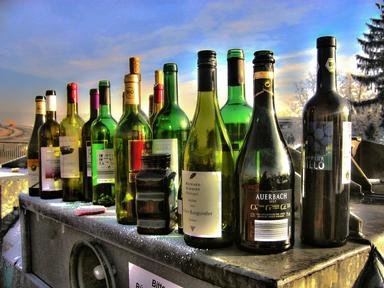Quiz Answer Key and Fun Facts
1. Traditionally Dom Pérignon is credited with inventing champagne, but he only perfected it. You know probably Dom Pérignon was a monk, but which monastic order did he belong to?
2. Philippe Clicquot founded a champagne house in 1772. When Philippe retired, his son François followed him as what we would nowadays call the CEO. But when François died in 1805, only 31 years old, his young widow took control of the company. What was the maiden name of this Veuve Clicquot?
3. Claude Moët founded a champagne house in 1743. His grandson Jean-Remy succeeded him as PDG (président directeur-général) in 1792, after Claude's death. Jean-Remy made a fortune by dealing with Napoleon and his followers. Did Napoleon's defeat at Waterloo lead to Jean-Remy Moët going bankrupt?
4. The champagne house Piper-Heidsieck was founded by Florens Heidsieck in 1785. Which artist, otherwise known for his eggs, designed a celebration bottle for the centennial vintage 1885?
5. The Champagne house Pommery was made famous by Alexandre Louis Pommery's widow. Louis, who died in 1858, had a job quite different from making champagne. What was his job?
6. One of the smaller champagne houses, founded in 1798, shares its name with the inventor of the muselet, the steel wire frame that holds the cork on the bottle withstanding the pressure. Who is credited with the invention of the muselet?
7. Eugène Laurent and his wife Mathilde Laurent née Perrier obtained the vineyards for the Laurent-Perrier champagne house in a way that was a bit different from that of most champagne makers. How did the couple Laurent-Perrier acquire their vineyards from an unrelated person?
8. The Champagne house Mumm was established in 1827 by three German brothers. I'll give you four first names. Which one of these was *not* one of the brothers Mumm who founded the eponymous champagne house?
9. In 1811, Pierre Perrier and his wife Adele Jouët founded their champagne house. In 1902, the heirs to this company decided to ask Emile Gallé to decorate their bottles with floral designs. In what style did Gallé execute this mission?
10. Not all champagne houses were founded by people born in the Champagne region. For example, Krug was founded in 1843 by Johann-Joseph Krug. Where was Johann-Joseph born?
Source: Author
JanIQ
This quiz was reviewed by FunTrivia editor
bloomsby before going online.
Any errors found in FunTrivia content are routinely corrected through our feedback system.

